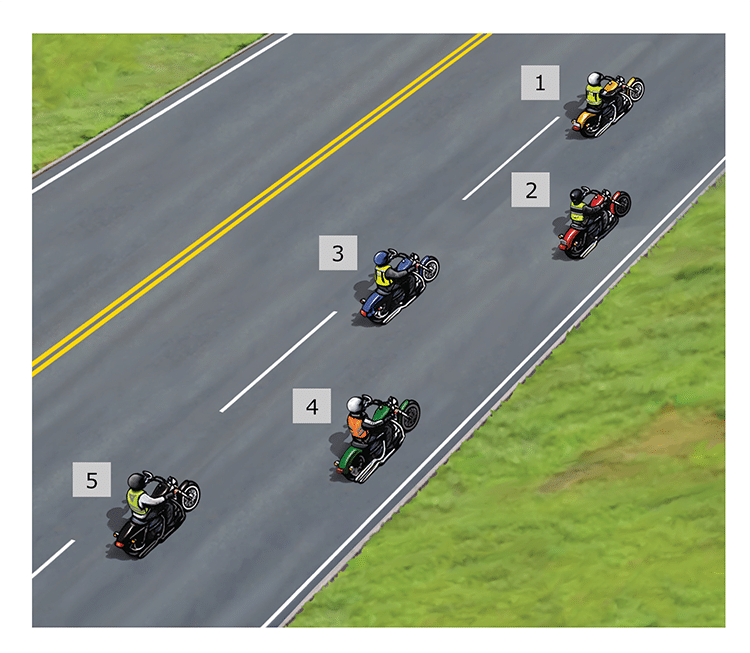Group or not to group…that is the question
One of the best parts of meeting up again is the chance to ride as a group. That said, the decision to ride in a group, or to ride solo, is an individual’s own decision. We welcome riders to join us, but leave them to decide
The rules for a solo rider are simple…Rule No 1: you are totally responsible for yourself and your safety. No problem there then!
When you ride in a group it is tempting to believe that someone else is responsible. They are not!. Rule No 1 still applies. You are totally responsible. Ride your own ride, within your own experience and capability.
So, what is the difference?
The difference is that, riding in a group, there is an additional responsibility to your fellow riders. There is a leader and a tail end Charlie. Think of it as a patrol. In a patrol, you work as a team, but are still individually responsible. I think this is why we veterans do enjoy group riding.
The “leader” is not “the boss” he is the leader. He rides at the front, navigates and signals and leads the group. He is the “Road Captain”
Generally recognised signals

How do we ride?
We establish the group, using numbering and positioning. Road Captain allocates your number and you maintain your position behind the number in front, and in front of the number behind. Seemples !!
Staggered Riding

The safety of everyone in the ride is paramount. Staggered riding gives time to think and react. By maintaining, as in a patrol, your position relative to everyone else, you create an order that allows everyone to settle and enjoy the ride.
DO NOT CHANGE YOUR POSITION IF THE LEAD RIDER CHANGES HIS/HER POSITION!!
This is because the lead rider will also be the “lead scout” so he will be moving his position to scan ahead, look for obstacles, decide on route, pick junction and a whole host of other things. No 2 controls the tail by maintaining his/her position. This acts to stabilise the remainder.
Junctions and traffic lights
This is where you close into the gap. Let’s look at the picture below. When the ride comes to a stop:
No 2 moves to the side of No 1
No 3 moves immediately behind No 1
No 4 moves to the side of No 3
No 5 moves behind No 3
You get the idea! In other words, we reduce the length of the column by at least half. This bunching allows the group to cross the junction in a tighter formation, spreading back to “normal” as the junction is cleared

